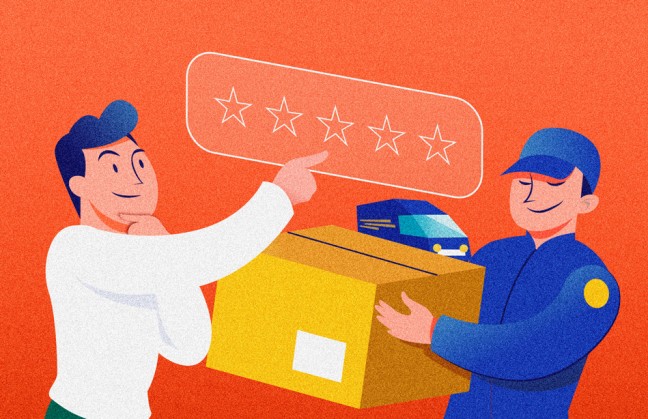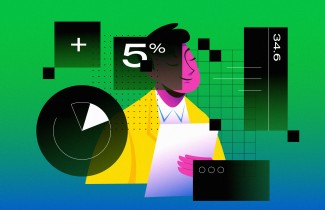The Customer Is Not Always Right
Measuring aggression at work: the professional and emotional impact of customer abuse aggression on employees

Unfortunately, it is common for us to witness situations of aggression directed at salespeople or customer service frontline employees. Some of these situations are clear to see, such as when a customer reprimands or hostilely argues with an employee, or when a product is thrown violently at a store employee. However, there are more subtle situations, such as when a customer stares at an employee, does not answer the questions asked, or publishes a false Google review to abuse or garner benefits from a business. In addition to attacks involving physical contact, such as pushing or hitting, point-of-sale or customer service staff may receive verbal attacks in the form of shouting, arguing or insults, or uncivil actions, such as unpleasant, impolite, disrespectful or even rude behavior.
Customer abuse in the service sector has been increasing in recent years, as shown by several studies carried out by business chambers and workers’ associations in the retail sector. Undoubtedly, the multiple forms of aggression that occur in these contexts are a common concern among companies and unions, as well as among those affected, the employees, who may suffer emotional exhaustion or work stress as a result of the hostility of their clientele.
Despite the increase in such incidents in the retail and service sector, until now no comprehensive tool had been developed to measure the behavior and, therefore, there was no evidence to enable strategies to mitigate the abuse. Previous research focused on some types of aggression, but did not address the problem holistically. Therefore, my colleagues Gary Mortimer and Shasha Wang from Queensland University of Technology, Australia, and I have developed and validated a tool for accurate measurement of the spectrum of aggressive behavior employees receive from customers. This tool comprises a questionnaire with 19 questions, whose objective is to advise managers in the sector on the implementation of preventive measures and mitigation of workplace aggression. The tool was presented in the article “Measuring customer aggression: Scale development and validation”, recently published in the Journal of Retailing and Customer Services.
Different Causes that Do Not Justify Aggression
The idea that 'the customer is always right' is often used to explain instances of customer aggression and abuse. This customer sovereignty is related to a perception of superiority in customers’ relationships with employees. Customers often assume they are superior to an employee, who supposedly has a lower status – with a low-paying, low-level job that only requires basic skills. They are more likely to be aggressive with employees who lack a "status shield," such as young women, students or migrant workers, than with their supervisors.
But aggressiveness is also related to customer anger. When customers feel unfairly treated, they may behave aggressively toward an isolated employee because the source of their frustration or provocation—which could be company policy, for example—is too powerful to deal with or could lead to retaliation. This concept is called displaced aggression, and it is the one we use in our research to understand its manifestations in the sector.
The Multidimensionality of Aggressions
A key contribution of this research is to have identified four dimensions of customer aggression as follows:
- Reactive-expressive aggression is visible verbal or physical altercation, such as throwing objects, pushing, intimidating or hurting employees. It is driven by negative emotional reactions that are often triggered by situations that the customer does not expect, such as the unavailability of an advertised product or the perception of poor service.
- Proactive-expressive aggression involves premeditated or deliberate behavior by the customer to seek some personal benefit or accomplish a goal. Some of the most common behaviors in this context include yelling, verbally demeaning, threatening, or insulting employees in order to get a refund, trade, upgrade, or other benefits.
- Reactive-inexpressive aggression is a response to an unexpected situation that leads to behavior that is neither verbal nor physical but is threatening. It can take the form of covert hostility, for example, a customer aggressively staring at an employee, using height to intimidate, or ignoring an employee’s questions.
- Proactive-inexpressive aggression is also neither physical nor verbal but involves a deliberate act of initiating indirect or covert aggression to achieve a goal, such as gaining certain benefits or damaging the brand. Such actions include falsifying complaints or reviews about an employee, as in the case of posting a negative review to get compensation, such as a free meal.
These aggressions, when they are repeated, can lead the person attacked to suffer emotional exhaustion and negative psychological effects, decreasing their effectiveness and job satisfaction. As a result, employees may be affected by acute work stress, which will ultimately affect their attitude to, and relationship with, the company. It has been shown that high levels of work stress can cause an employee to engage in behaviors that deviate from the company standards, or even lead them to resign.
How to Deal with Aggression in Companies
The first thing managers can do to deal with this problem is to treat aggression like any other risk or danger that must be properly identified, measured and prevented. In this regard, one of the challenges for the industry is to recognize and alleviate the great lack of knowledge that exists about this complex phenomenon using some of the available tools –such as the one we offer.
Secondly, the effects of aggression on staff turnover can be moderated if there is organizational support from managers. The scale we have created makes it possible to identify the types of aggressions to which employees are subjected, and their frequency and location, and, consequently, to design strategies to mitigate them. For example, managers can increase the number of supervisors at checkout areas or install video surveillance in the customer service area.
Finally, it is not enough for support to be merely sporadic or reactive. To improve the work experience and increase the retention rate, a plan must be comprehensive and sustained over time, for example, through customized solutions or service narratives that are relevant to frontline employee interactions. Additionally, it is important to highlight that the relationship between customer aggressiveness and work stress was found to be lower in organizations where employees feel that their "collective voice" is heard and valued.
The author is a Professor-Researcher in the Marketing and Business Intelligence Department at EGADE Business School.



